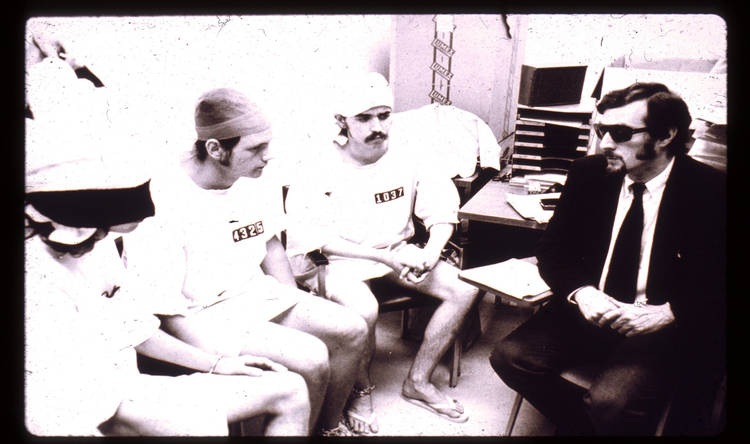The Stanford Prison Experiment

In the summer of 1971, an ad in a California newspaper sought male volunteers for a study on the psychological impacts of prison life. Out of numerous applicants, 24 healthy, mostly middle-class and White male college students were selected. Paid $15 per day, these participants were randomly assigned roles as either prisoners or guards.
The makeshift “prison” was in Stanford University’s psychology building. Participants acting as prisoners were “arrested” at home, booked, and then brought to the staged prison. The plan was for the study to last weeks.
Rapid Role Adoption
Shockingly, the participants immersed themselves in their roles more quickly and more intensely than expected. The guards engaged in increasingly sadistic behaviors, such as depriving prisoners of basic comforts like sleep and privacy. The prisoners, in turn, exhibited heightened anxiety and hopelessness, which led them to tolerate the guards’ abuse. Because of this alarming degradation of behavior, the study was terminated after just six days.
Zimbardo drew some conclusions about social behavior based on the experiment, claiming that the guards and prisoners were fulfilling their social roles. Social norms (expectations of what is appropriate and acceptable behavior in social settings) require guards to be authoritarian and prisoners to be submissive, so when prisoners rebelled, they violated these social norms, which led to upheaval. For example, guards demeaned prisoners with push-ups and removal of privacy. Prisoners rebelled by throwing pillows and trashing their cells. Zimbardo used the experiment as evidence as to why good people do evil things.
Questionable Findings: A Second Look
But wait. While this Stanford Prison Study seemed to reveal just how far people would go to fulfill expected roles, the Stanford Prison experiment’s findings have been called into question, and Zimbardo has been criticized for using unscientific practices. For example, were the guards and prisoners really behaving typically, or were they over-exaggerating their behaviors in order to “please” the experimenter, or re-enacting behaviors they had heard about or seen? Critics have noted that Zimbardo instructed the guards to exert psychological control over the prisoners, and that some of the participants intentionally behaved in a way that would help the study, so that, as one guard later put it, “the researchers would have something to work with.”[1]
Participants’ behavior may have been shaped by knowing that they were watched (called the Hawthorne Effect). Instead of being restrained by fear of an observer, guards may have behaved more aggressively when supervisors observing them did not step in to restrain them. Many have argued that the validity and merit of the research findings were significantly affected by demand characteristics, which refers to how participants form an interpretation of the experiment’s purpose and subconsciously change their behavior to fit that interpretation. The experiment has also been criticized for its small sample size and unrepresentative sample population, especially given that flyers recruiting people for the experiment advertised it as dealing with “prison life.” The results of the experiment have never been successfully replicated.